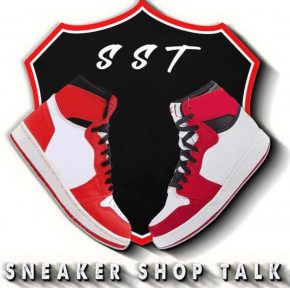The Chuck Taylor All-Star


The forerunner to the granddaddy of all basketball sneakers began its life way back in 1917 as a shoe marketed as “Non Skids”, a sneaker composed of a canvas upper attached to a rubber sole.

Four years later a young salesman and semi-pro basketball player By the name of Chuck Taylor would join Converse as a salesman. Shortly after his arrival he suggested several augmentations to the Non-Skid’s design that would lead to better flexibility and ankle support. Thankfully Converse heeded Taylor’s suggestions and with the addition of the All-Star logo with Taylor’s signature , the Chuck Taylor All-Star, the first celebrity endorsed athletic shoe, was born. The sneaker would become the official shoe for 8 Olympiads ( 1936-68); dissing WWII the Chuck was the U.S. armed forces official training shoe. Over the course of the next five decades since its debut the Chuck Taylor would become staple basketball footwear at all levels, last being seen on an NBA court on the feet of Mickey Johnson in the 1985-86 season. The Chuck has now transitioned to a popular casual shoe worn by people all across the world
The Air Jordan I

Designed by Peter Moore, the Air Jordan I was introduced to the world on the feet of some skinny kid from UNC that had been taken number 3 overall in the 1984 NBA draft by the Chicago Bulls.

The lore surrounding the AJI is that the NBA banned this shoe because it did not conform to the league’s uniform code.
The actual banned shoe was the Air Shipp , which was the actual sneaker MJ started his rookie campaign wearing. However that did not stop Nike from initiating some clever and timely marketing combined with the scintillating on-court exploits of Mr. Jordan and the foundation of a footwear sensation was being laid. Thirty-seven years after its original release the favourite Air Jordan of the man himself, Michael Jordan, still causes sell outs and long lines.
The Air Jordan III

If the Air Jordan I is the shoe the kicked off the Air Jordan line, then the Air Jordan III is the sneaker that saved it ( and possibly Nike as a whole). Let’s take a trip back in time to late 1988. A young Michael Jordan was not that enamoured with Nike, after breaking the navicular bone in his left foot in the Air Jordan II .

Apparently Jordan’s displeasure was not a secret amongst Nike brass as according to Tinker Hatfield , CEO Phil Knight was “pretty well convinced” that MJ was leaving Nike he was “very, very concerned.” The course-defining meeting begins – and Michael is not there. One hour goes by and no Jordan. Two hours pass and still MJ is a no-show. Three hours elapse and still Jordan is absent. Four hours after the meeting was set to commence, Michael finally arrives. He was playing golf with Howard White, a Nike employee ( and future president of Jordan Brand), with White trying to convince Jordan to leave the lynx and come to the meeting. Jordan eventually arrived to meeting saw the Jordan III and after speaking with his father James, which included some serious rebuking for showing up so late for the meeting, took his advice and remained with Nike. The Air Jordan III, along with Mr. James Jordan, are two of the reasons Nike became the juggernaut it is today.
The Nike Kobe IV

The Kobe IV is one of the most influential sneakers of the past 20 years and signaled a paradigm shift in the design of modern basketball shoes. Seeing that soccer players were able to make sharp and quick movements in their low collared soccer boots, Kobe Bryant challenged Nike Basketball why the same thing could not happen with basketball shoes? Eric Avar and Tom Luedecke produced a performance and aesthetic masterpiece that illuminated a new direction for basketball footwear. Just as the sneaker’s namesake, the Kobe IV has left its mark in ways that continue to manifest in design rooms and on the hardwood to this very day.





